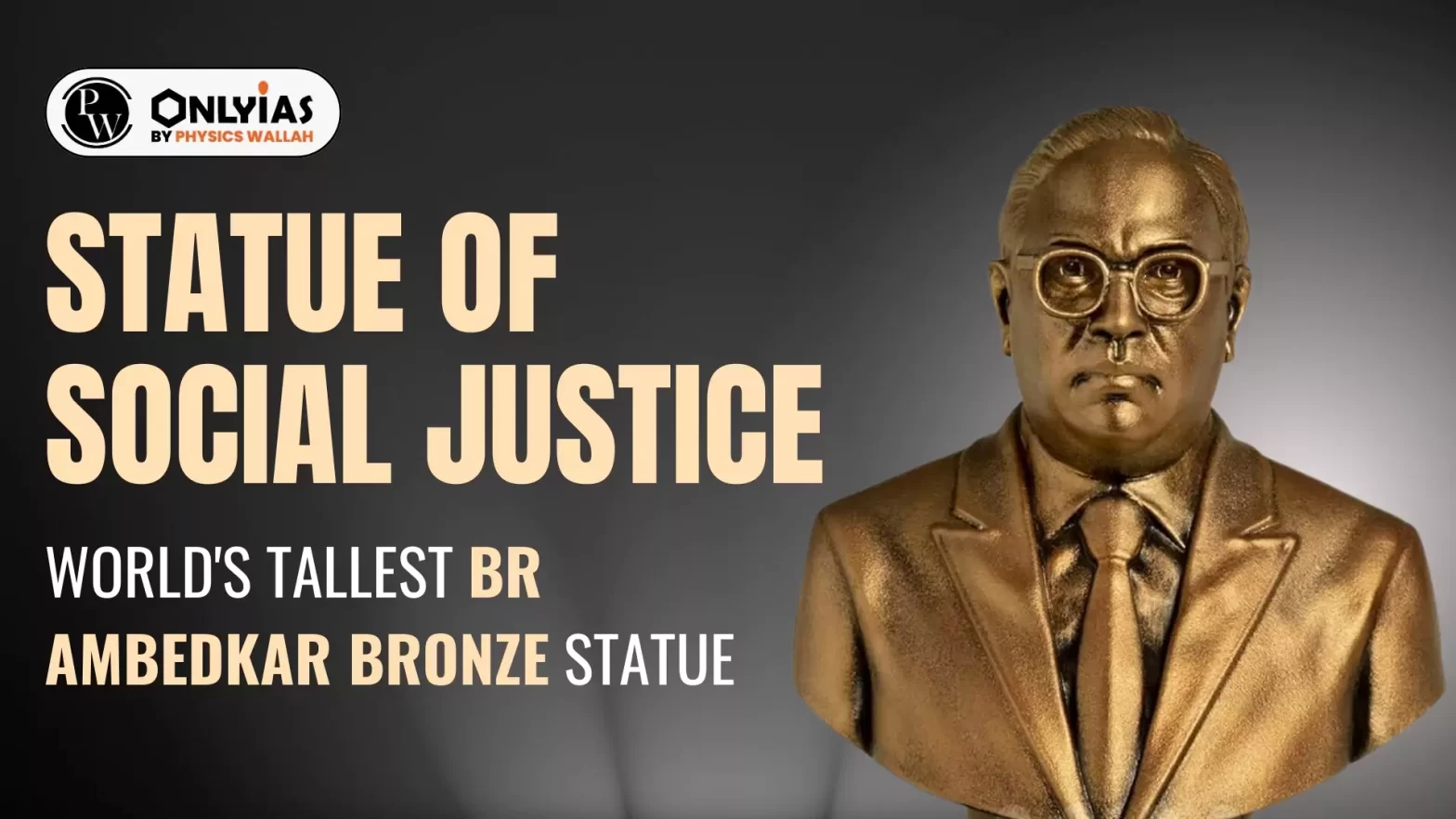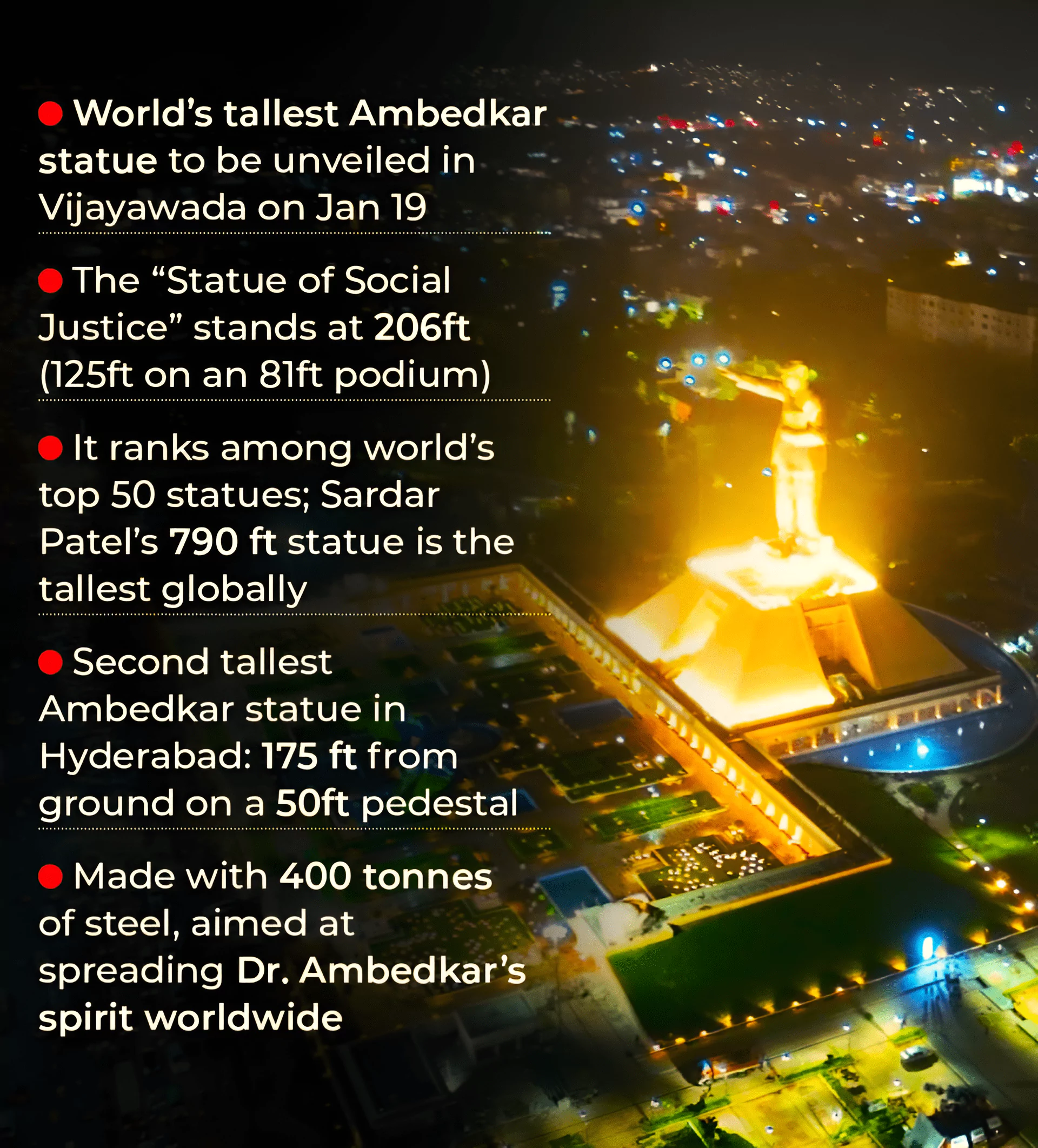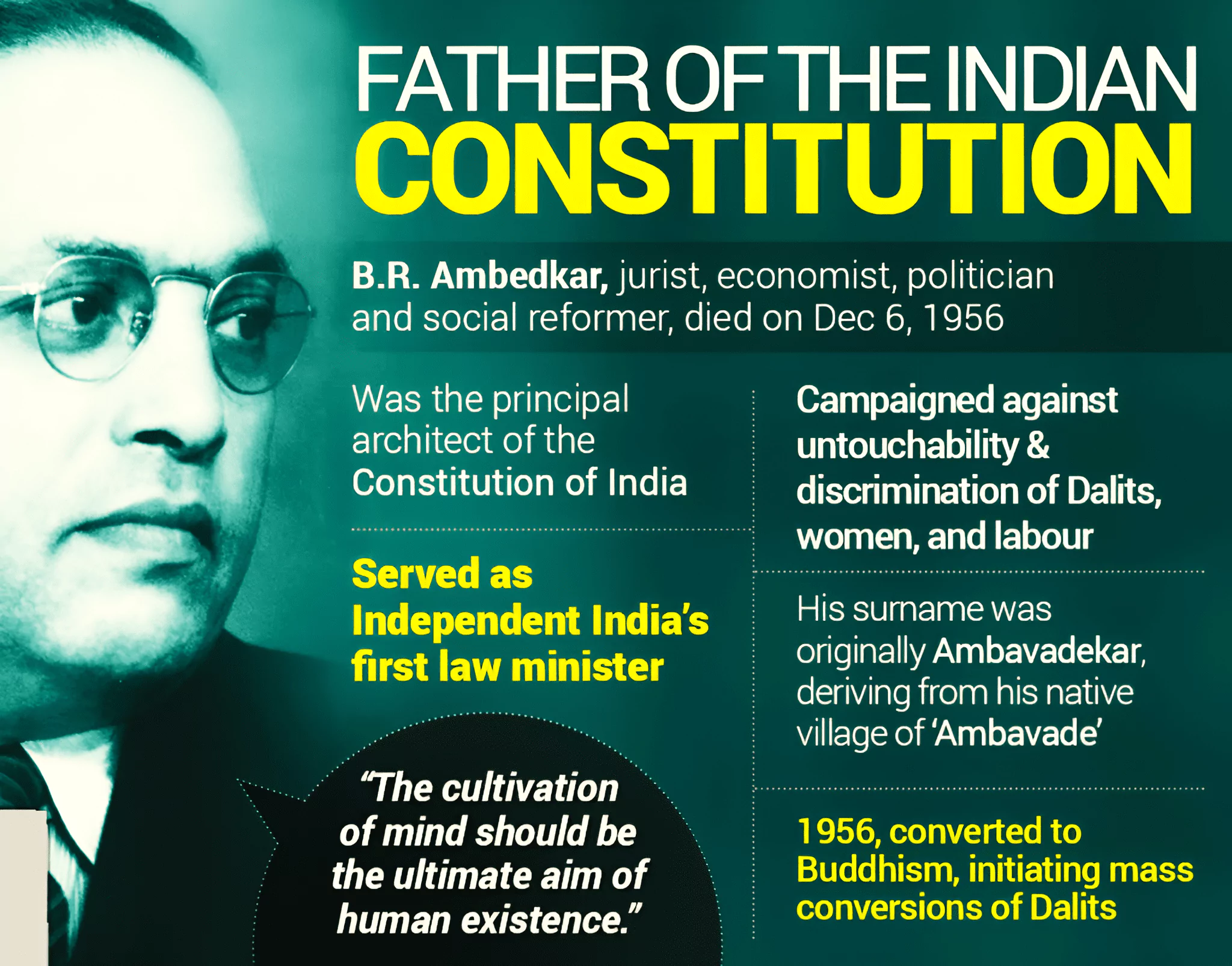Location of Statue of Social Justice: The Statue of Social Justice is the tallest Dr BR Ambedkar bronze statue in the world, and is situated at the Ambedkar Smriti Vanam in Vijayawada, Andhra Pradesh.

The Statue of Social Justice, featuring Dr BR Ambedkar Ambedkar, will be unveiled by the Chief Minister of Andhra Pradesh in Vijayawada.


The Mahad Satyagraha
|
|---|
Fight for Depressed Classes |
|
Political Participation |
|
Literature |
|
Associations |
|
Anthropology |
|
Economic Contribution |
|
Conclusion
| Must Read | |
| NCERT Notes For UPSC | UPSC Daily Current Affairs |
| UPSC Blogs | UPSC Daily Editorials |
The statue of social justice is the tallest Ambedkar statue in the world
Statue of Social Justice is located in Smriti Vanam, Vijayawada, Andhra Pradesh.
Dr Bhimrao Ramji Ambedkar was an Indian polymath, economist, statesman, social reformer and the father of the Indian Constitution.
Dr Ambedkar launched the Kalaram Temple movement in Nashik for opening the doors of the temple for depressed classes.
The core idea of Reserve Bank of India was based on the concept presented by Babasaheb to the Hilton Young Commission.
Dr Ambedkar was posthumously conferred with Bharat Ratna, India's highest civilian award, in 1990.

<div class="new-fform">
</div>